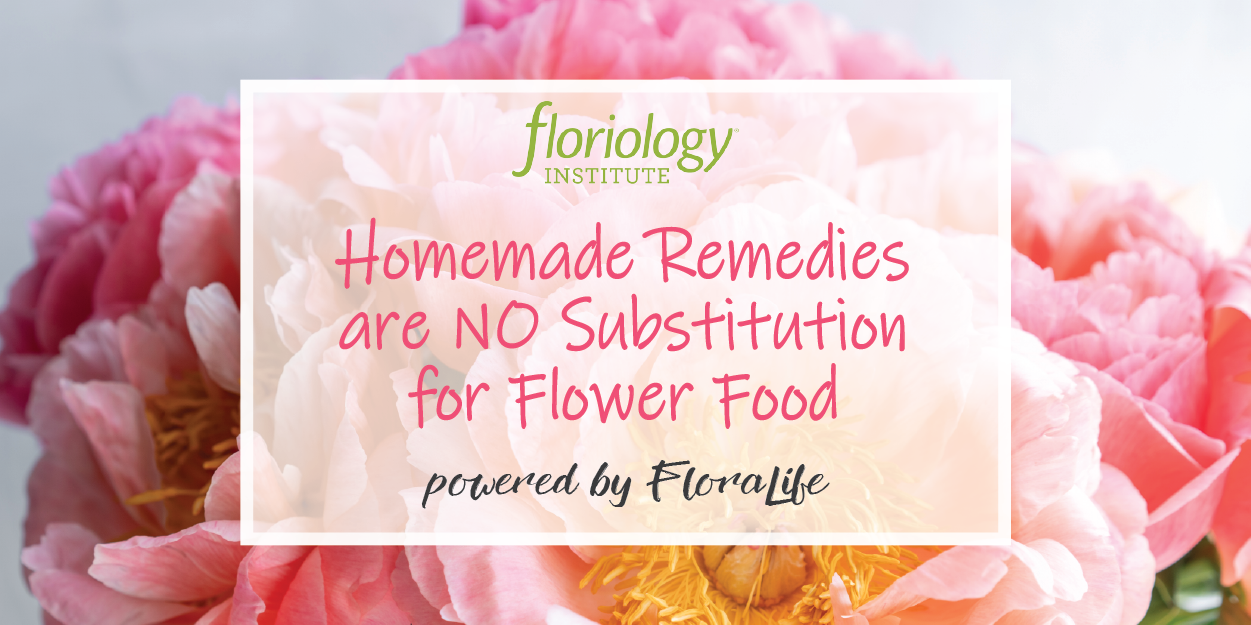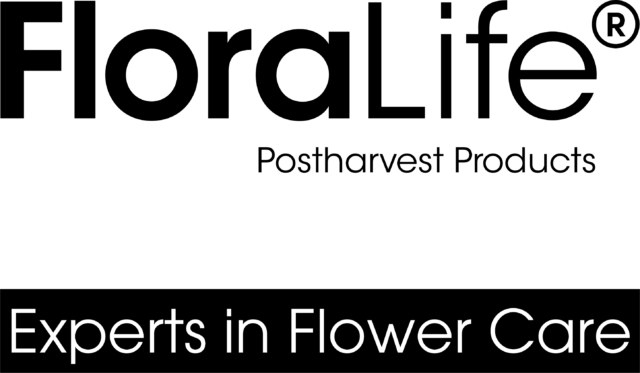Homemade Remedies are no Substitution for Flower Food
Floriology Institute February 2022, powered by FloraLife

We have all heard somewhere along the line that when you have a vase of fresh flowers you need to add a little something to the water to make them last. Copper pennies, aspirin, soda, white wine, bleach and lemonade are among the most popular home remedies. Lemonade is actually the closest to something that works; it can help up to a point in that flowers need nutrition in the form of sugar. Slightly raising the acidity of the water (lemonade contains citric acid) also aids water uptake. However, the big problem with lemonade is that its “cleaning” properties are inadequate: the resulting growth of micro-organisms in the water could cause blockages in flower stems and make the blooms wilt. Sugar also helps bacteria multiply more quickly.
Although it may be a feel good, in actuality these home remedies are quite ineffective because none of them contain all the necessary ingredients to feed and nourish the stems. Only formulated commercial flower foods contain all the correct ingredients in the right proportions to enable flowers to last longer.
Why is it important to use flower food?
While a flower is still attached to a plant with roots, it receives nourishment which allows it to grow and develop. When the flower is cut from the plant it loses its source of nourishment and water. Fresh cut flower food was developed to simulate the flower’s originate environment and allow for the flower to fully develop and open. Used properly, flower food will provide optimal vase life and greater enjoyment to the customer.
Here are the key functions of a fresh cut flower food.
- Nutritional source – Plants produce sugar through photosynthesis from water, carbon dioxide, and sunlight. When a flower is cut from the plant, photosynthesis is no longer an option for the production of sugar. This is due to a lack of sunlight. Flower food provides a nutrient supplement to assure the continuation of development of the flower bud into a fully opened and beautiful flower. With the use of flower food, the flower will perform better in terms of size, color, and vase life.
- Hydration – Flower food helps lower the pH which keeps the water and food conducting system in flowers working at maximum efficiency. When a flower has been dehydrated through the normal course of postharvest and shipping, it needs a jump-start. When the pH of a solution is more acidic, water uptake happens faster. A good flower food includes an agent to lower the pH of the solution which encourages hydration, keeping the tiny tubes, or vessels, in the stem continually drawing up water.
- Stem Unplugger – From grower to end consumer in the transport chain, a flower is likely to be exposed to debris which can clog the stems, resulting in the reduction of ability to take up water and nutrients. This blockage can easily shorten the life of a flower and result in a higher percentage of non-usable products by the retailer, or even an unhappy customer. Flower food includes a special ingredient to keep the water flowing through the stem.
Be sure to follow care and handling instructions carefully. Best practices yield to best results.
To learn about flower care or to inquire about products and availability in your region, visit www.floralife.com or contact your local FloraLife representative.
*Product availability depends upon geographical region. Check here for more information.
